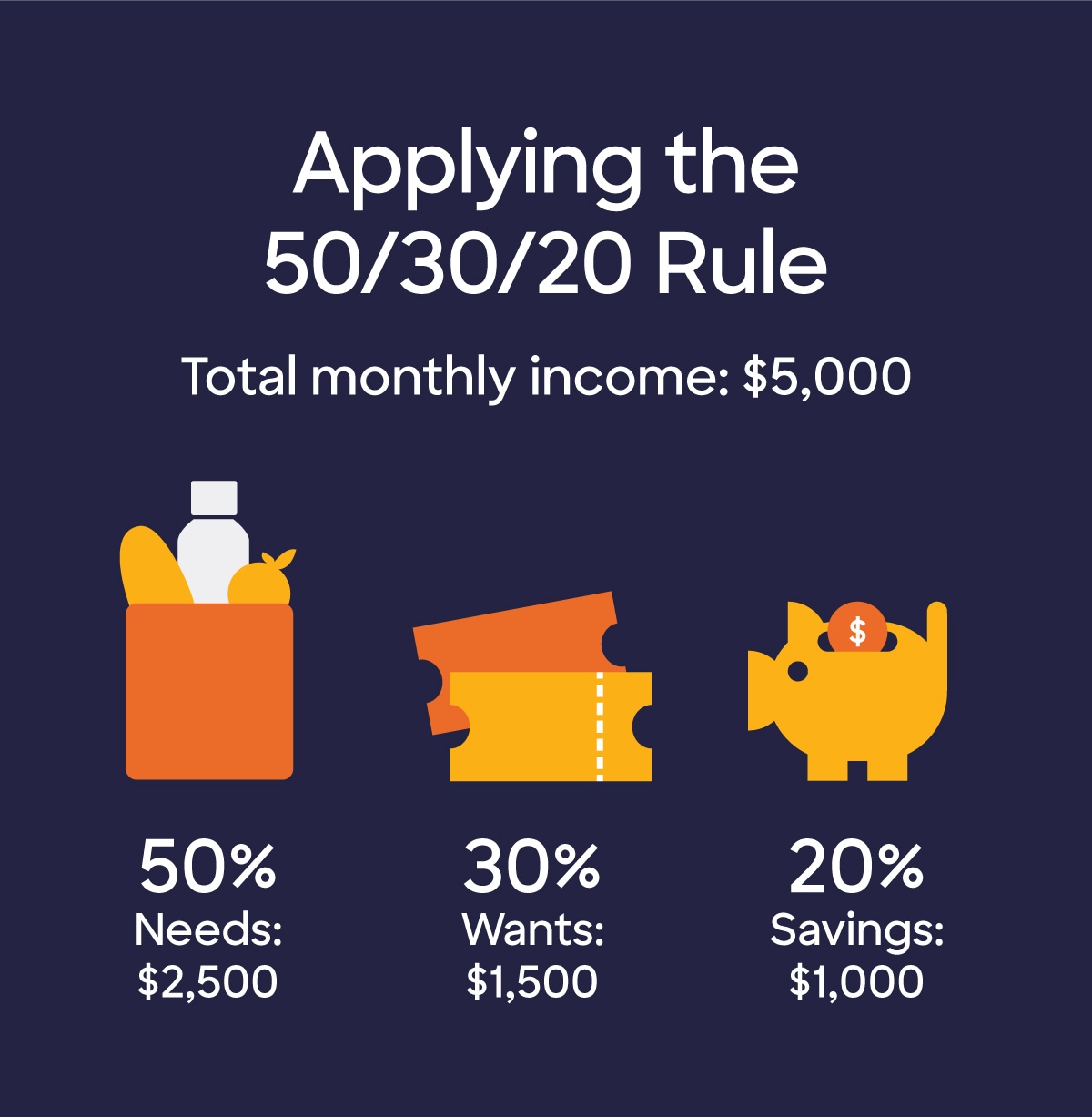Basic needs first: 50% of your budget
The amounts you consistently spend for housing and food may be your most obvious basic needs. This category might also include regular expenses for things like childcare, utilities, transportation, minimum debt payments, and any other basic requirements of daily life.
Here’s a more detailed list of some of the expenses that often fall into the “basic needs” section of a budget:
- Housing, including rent or mortgage payments and insurance
- Childcare
- Transportation costs, including car insurance, operating expenses, and costs for job-related parking—or public transit passes
- Household utility bills, cell phone, and internet service
- Medical expenses, including insurance co-pays and prescription medications
- Minimum payments on credit card debt or other loans
If the total cost of these essential living expenses consistently creeps above 50% of after-tax income, it could be more difficult to pay off your debt and/or reach important savings goals.
Also, if you carry any debt with a variable rate, it may become more expensive to make even minimum payments if interest rates rise, which will affect the total amount you need to cover basic expenses. One way to keep that debt payment in check and stabilize your budget may be to pay off variable-rate credit card debt with a fixed-rate Discover® personal loan.
Wants: 30% of your budget
A budget only works if you stick to it. And for you to stick to it, the budget must be realistic.
Let’s face it, you will probably spend some money on wants—discretionary items like dining out, recreation, vacations, entertainment, and gifts. But to make sure you stay on track, set a limit on nonessential spending that allows you to enjoy a splurge or two without cutting into funds allocated to savings.
For most people, allowing 30% of after-tax income for discretionary expenses is a sustainable target for this category. The good news? If you can’t quite cover your basic living expenses with 50% of after-tax income, you can set a lower target for spending on wants and still have room for a little fun.
Savings and debt repayment: the game-changing 20%
The most successful savers treat their savings plan as a non-negotiable budget item. That way, they should have an adequate emergency fund and are consistently contributing to long-term savings for retirement or other important goals.
Of course, committing to regular savings isn’t always easy. Depending on your circumstances and where you live, you might need to consider lifestyle adjustments or developing an additional source of income. You’ll know this is the case if your regular expenses consistently keep you from saving an amount that approaches this 20% target.
Your savings can include several different tools. If you have a 401(k) plan through your job, get onboard as soon as you can: 401(k) savings are automated, tax-deferred, and often matched by your employer. An IRA is also tax-deferred. And many people pursue additional investment strategies to build a bigger nest egg.
In case of an emergency, you may need easy access to funds, so some portion of this 20% should go into a regular savings account , a money market account, CD with no penalty, or interest checking account separate from one used for bill paying.
Direct savings are critical, but if you have debt, especially high-interest or variable-rate debt, it may make sense to balance those savings with a plan to pay off debt. The sooner you can consolidate, reduce and ultimately eliminate most forms of higher-interest debt, the better your financial picture may look.
Dedicating a share of your 20% savings to make additional debt payments, for credit card accounts, student loans, or other debt, can also count as saving because you’ll reduce the amount of interest you’ll pay over time.
Try out the 50/30/20 rule for yourself
If you want to assess whether the 50/30/20 budget rule might be a useful strategy for you, simply get out a pencil (or open a spreadsheet) and itemize your expenses in the appropriate category.
“The first step in the budgeting process is to write down what you earn and what you owe,” says Dan Nickele, vice president, Discover Personal Loans. “Make a list of your income sources and post-tax earnings. Then write down what you owe for essential spending categories like housing, transportation, childcare, and food.”
This exercise should give you a sense of whether your basic needs amount to about 50% of your after-tax income. If they do, you have a budgeting model that will help ensure long-term savings, while giving you room to buy some things you want now. If they come to more than 50% of your after-tax earnings, you’ll have started the work to figure out where you might change your spending habits.
And if you’re ready to kick your savings program into a higher gear, look for ways to shorten the time it will take you to pay off your debt and reduce the amount you pay in interest. That may help you reach other important financial goals more quickly. You may be able to consolidate variable-rate or higher-interest debt with a fixed-rate, installment personal loan. A personal loan could help you save money on interest and pay off debt sooner.
Wondering how a personal loan could help you consolidate debt, stick to your budget, and boost your savings?

